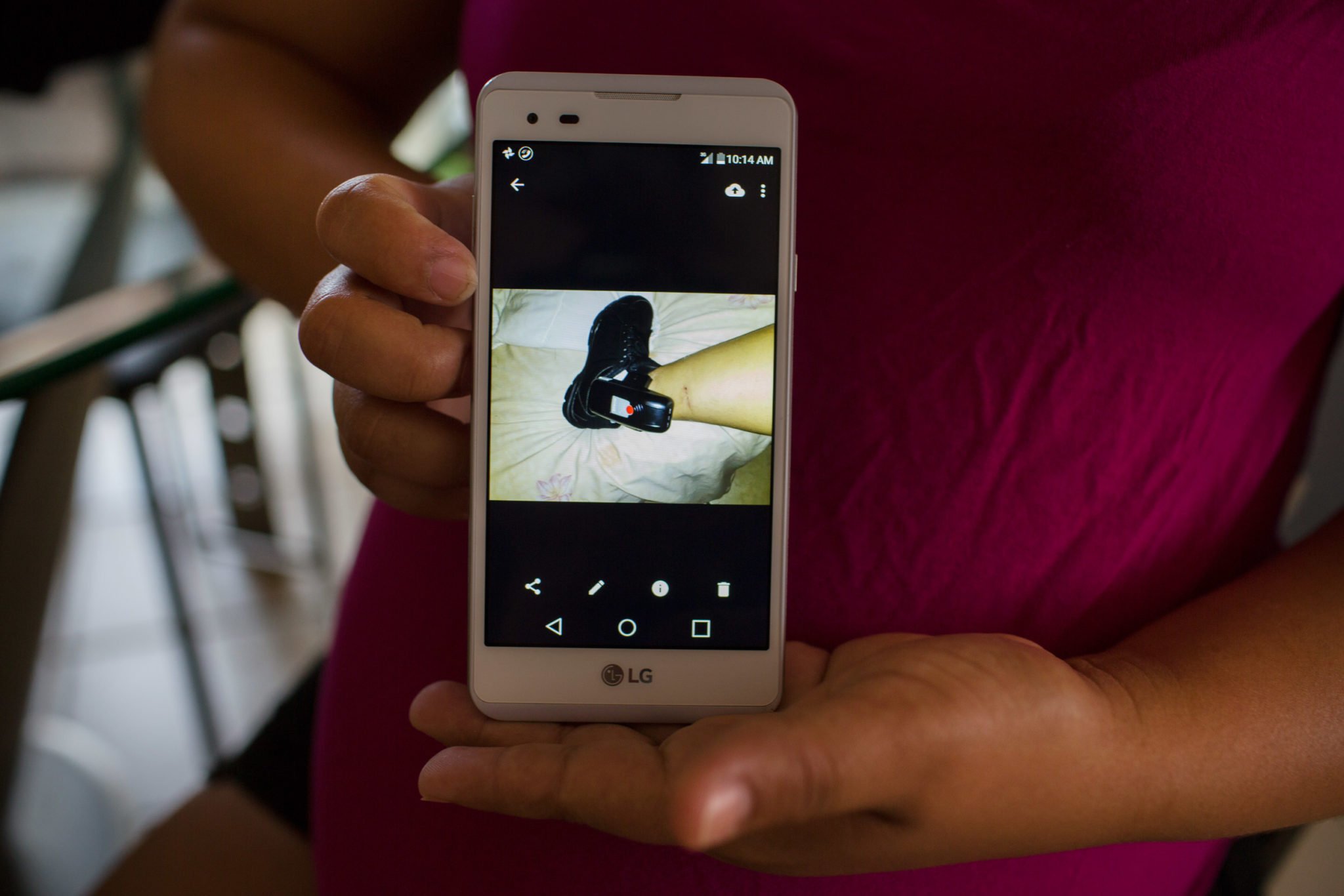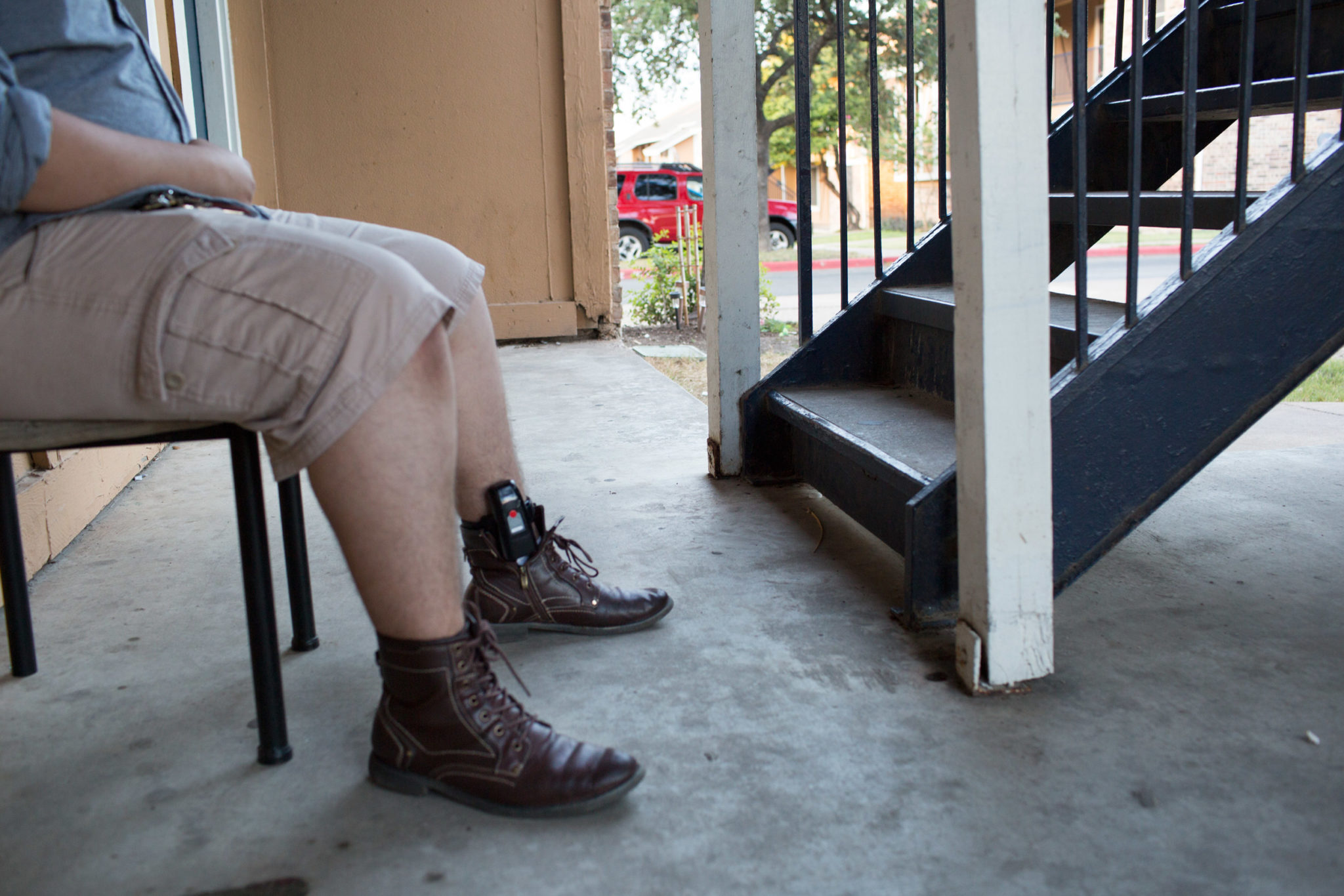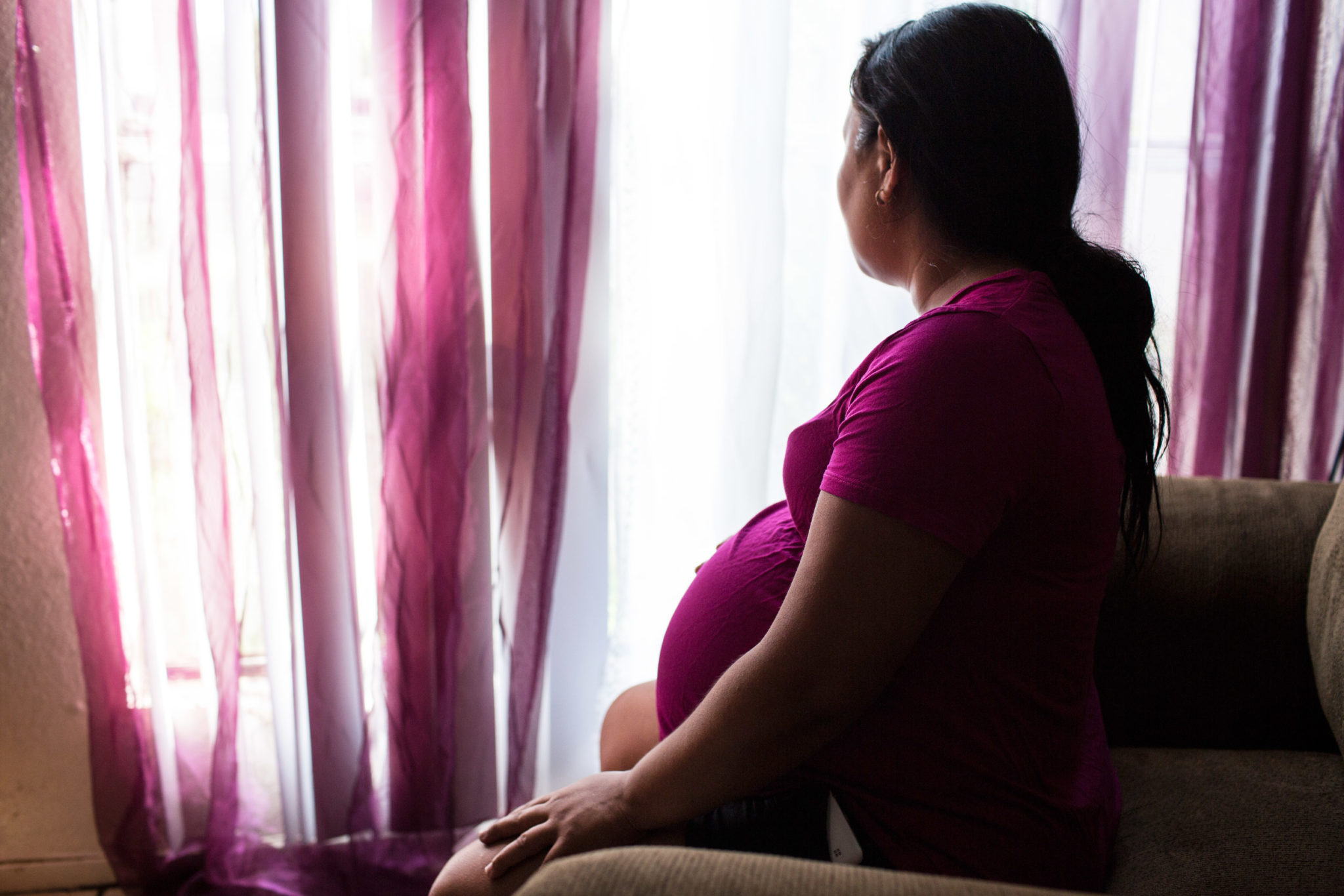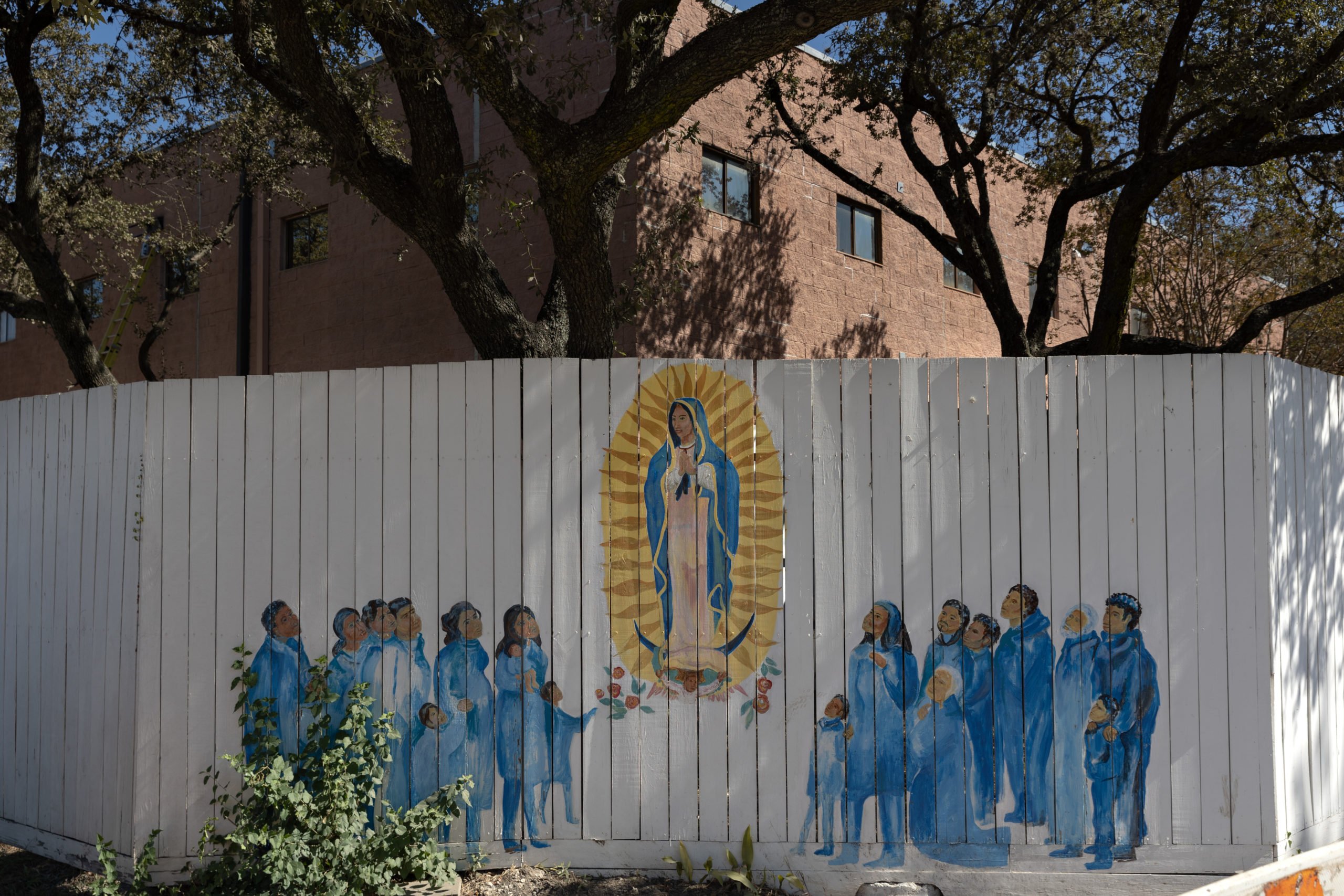
Bound to Pay
Does a company that puts ankle monitors on undocumented immigrants provide a helpful service, or a debt trap for desperate people?


The first person Rosy Valdez met when she left the immigrant detention center in Houston was a middle-aged man, who waited for her in the parking lot holding a photo of her and a stack of documents. The man asked her name in broken Spanish, then led her to his car.
They waited for three other immigrants to emerge, then headed to a fried chicken place. The newly free immigrants chatted about where they were going to live and work. After months of prison food, the chicken tasted “like it came from heaven,” Valdez said.
The stranger paid for their meals, then took the group to a nearby office. There, he and several others had them sign contracts, mostly in English, took their photos and strapped devices about the size of a ’90s-era cell phone around their ankles. “It scared me when I saw how big it was,” said Valdez.
The man was an employee of Libre by Nexus. Since 2013, the Virginia-based company has gotten thousands of immigrants out of detention by arranging for bail bondsmen to post immigration bonds. In exchange, customers pay the company hefty upfront fees and agree to wear GPS-equipped ankle monitors — a privilege for which Libre charges $420 a month, sometimes for years. Valdez asked her name be changed to prevent reprisals from the company.
Valdez, who fled Honduras in 2015 when gang members killed her husband, languished for three months in the Houston Contract Detention Facility with a $10,000 bond she had no way to pay. She was desperate to get out; the chances of winning an asylum case while locked up are abysmally low.
A fellow detainee eventually gave her Libre’s number, and she passed it to a friend in Austin who paid the company $2,500 in upfront charges. Within days she was free, with a court date set for November 2019.
Over the next year, Valdez paid Libre a total of $3,780 for the monitor, money she mostly earned working at a Mexican restaurant and babysitting for friends and family.
Since 2013, Immigration and Customs Enforcement (ICE) has hiked the average cost of an immigration bond by 70 percent.
The device was irritating and, at times, painful. At the restaurant, it would bang against her ankle when she walked, so she would push it up her calf, where it eventually cut into her skin. When her coworkers saw the device, Valdez says she was so ashamed she quit.
At first, Valdez believed she was paying down her $10,000 bond and working toward the day when the ankle monitor would be removed. But a few months after her release, she called Libre to check on her progress and was shocked to hear that the fees were merely a rental charge for the device — she was no closer to being free than the day she was released from detention. To get the monitor removed and settle up with Libre, she’d still have to pay the company $10,000, according to her contract.
Valdez isn’t sure whether the financial terms were explained to her when she signed; she was so excited to be released that it’s all a blur. With a fourth-grade education, she can barely read her native Spanish, let alone English. When she finally learned the truth of her relationship with Libre, she said she “felt something very ugly … because it’s so much money. It’s too much money.”
***
Since 2013, Immigration and Customs Enforcement (ICE) has hiked the average cost of an immigration bond by 70 percent — from $5,400 to $9,300 — according to the Washington Post. Such sums are unaffordable for most recently arrived immigrants.
That’s where bail bondsmen could help. Typically, bondsmen take a 10 percent down payment and cover the remainder. But many won’t work with immigrants, who have court dates years in the future and could flee the country. Some will take the risk in exchange for collateral, such as a house or car, but most new immigrants have few possessions. That leaves many locked up “literally because they’re poor,” said Mary Small, policy director with the Detention Watch Network.
That’s where Libre by Nexus comes in. Launched by two ex-convicts in 2013, the company now pulls in more than $30 million a year, has more than 6,500 clients and nearly 30 offices nationwide, including in El Paso, San Antonio, Dallas and Houston, according to the Post. (Libre declined nine requests for comment for this story made during a two-week period.)
Libre’s contracts state that it provides collateral to bondsmen, who then pledge to pay the government if immigrants don’t show up to court. In return, Libre requires customers to wear GPS monitors, supposedly to keep them from absconding. Customers agree to wear the monitors until their cases are resolved, or until they somehow pay off their bond debt. Libre’s $420 monthly fee doesn’t touch the bond and will never be returned. It’s an arrangement that some immigrants find confusing.
Libre claims it’s helping immigrants by getting them out of detention when no one else will. “Our mission is to give hope to those who have lost it and to help those without a voice in the immigration system,” the company proclaims on its website. But critics say Libre is predatory — extracting whatever profit it can from a vulnerable population.
“They found a niche in the market that no one else was in,” said Simon Sandoval-Moshenberg, an attorney with the Legal Aid Justice Center, a Virginia-based nonprofit that obtained a trove of records about Libre in 2016. “And when you’ve got that, you can charge whatever the heck you want, and people who are extremely desperate will pay it.”
According to a 2015 lawsuit, the devices cost the company only $3 a day, though Libre charges its customers $14 a day.
Critics have long accused Libre of profiteering from desperate immigrants, but a class action lawsuit filed in February on behalf of three Libre clients goes further. It calls the company’s basic premise — that it’s charging immigrants for GPS monitoring — a “sham.”
“[Immigrants] are not in actuality paying $420 a month for rental of an ankle bracelet,” the suit states. “Rather, they are paying (excessively) for [Libre] to indemnify their immigration bail bond.”
In other words, the suit alleges Libre isn’t actually interested in monitoring immigrants; rather, it uses the devices as a pretext to levy exorbitant fees.
“The ankle bracelet is not actually about keeping track of people. It’s about … giving some excuse for why you have to charge people so much money.”
***

Daniel Flores, a baby-faced 22-year-old, opens the door to his north Austin apartment wearing shorts and cowboy boots. His left boot is unzipped halfway to accommodate a Libre ankle monitor that he’s been wearing for three years. “The sad part is it’s been so long, that I don’t even notice it anymore,” he said when I visited in July.
Born in Honduras, Flores has lived in Austin since his mother brought him to Texas when he was 6. (He requested a pseudonym because he fears retaliation from Libre.)
At 19, Flores was arrested outside a Walmart after shoplifting clothes he planned to wear to a family member’s wedding. Because he was undocumented, ICE took him to a detention center in Pearsall where he languished for three months, unable to pay an $8,000 bond. Like Valdez, Flores heard about Libre from another detainee.
In September 2016, about two years after he was released from detention, Flores received Deferred Action for Childhood Arrivals (DACA), the Obama executive action that allows some young undocumented immigrants to stay and work legally in the United States. But DACA didn’t close his removal case. It remains open — with a court date set for November 2019 — so he’s still shackled to the ankle monitor and his Libre contract.
For the last five months, Flores’ monitor hasn’t even worked — the charger’s broken. He said he calls every week to check in with Libre and always reminds them it’s busted, but they haven’t sent anyone to fix it. “I literally just have something on my leg now,” he told me in the bedroom he’s currently sharing with his mom. “I don’t think they even know where I am.” He’s afraid to cut it off because Libre’s replacement fee is nearly $4,000.
In court filings, Libre has admitted its devices have high failure rates, and Sandoval-Moshenberg said he’s heard many stories like Flores’.
“It goes to show that the ankle bracelet is not actually about keeping track of people,” he said. “It’s about … giving some excuse for why you have to charge people so much money.”
At his apartment, Flores called Libre on speakerphone, and a representative told him the company would send someone to fix the device on August 2. (They didn’t.) Flores asked if he would have to pay rent for the months the device was broken, and was told he “most likely” would.
In three years, Flores has only paid $950 out of more than $16,000 in monthly fees, not counting the upfront money his mom paid. On the call, he was told his current debt, including fees the company waived, was $2,500 — a figure the representative didn’t explain or itemize.
To get his device removed and be done with Libre, Flores would have to catch up on his monthly payments and find $8,000 for his bond. That’s not going to happen: Flores works at a convenience store making $9 an hour and pays rent for himself and his mom.
But Libre can’t do much to force Flores to pay.
Libre has no association with ICE and no authority to dispatch immigration agents, something immigrants often misunderstand. “People have this understanding that: ‘I got out of detention by signing this contract; if I withdraw from this contract, I’m back in detention,’ said Sandoval-Moshenberg. “But that’s actually not the case.”
In fact, he said, Libre is very limited in what it can do to someone who doesn’t pay, because failing to pay the company doesn’t violate the bond with ICE. Libre can pursue a civil suit for money, but that wouldn’t yield much from indigent immigrants like Flores and Valdez.
Beyond that, all Libre can do is ask the bondsman to request that ICE re-detain the immigrant and cancel the bond. ICE has “sole discretionary authority” over such requests, said agency spokesperson Sarah Rodriguez, and for ICE to even consider it, the bondsman would “generally” have to physically bring the immigrant to the agency.
***

In late 2016, Libre removed Valdez’s ankle monitor because she presented medical proof she was pregnant.
When I visited her in July, she was nine months along. Her belly bulged under a loose pink shirt as her sister’s children scurried around the apartment they share in north Austin. She placed a stack of documents from Libre on her kitchen table as she eased into a chair.
When Libre took the monitor off, it didn’t end her relationship with the company. Instead, the employee presented her with a different contract that requires her to make $420 monthly payments toward her bond debt, and suggests that she could be fitted with another monitor if she fails to pay. The contract also raises the possibility of being “arrested and detained by ICE.”
So far, she hasn’t paid a cent. She couldn’t work pregnant, she said, and she’s busy now: A couple weeks after my visit, Valdez gave birth to a son — a U.S. citizen — who’s now at home in their crowded apartment.
In August, she finally met with a lawyer who could help fill out her asylum application, and she’s scrounging money from babysitting to pay her, while tending to her newborn. In the last few months, Libre reps have called twice urging her to pay, but they haven’t mentioned the ankle monitor.
She’s lost track of how much she owes, and she’s afraid to ask. Even so, she’s not blowing off her obligation to the company: Valdez said she plans to hunt for work as soon as her baby’s old enough and she can find childcare.
“I’ll pay them,” she said.
Editor’s note: Read more about the mass incarceration of immigrants and alternative options in our America Beyond Detention series.
Deep Dives into America’s Immigration System
Notify me when the next one is published:


